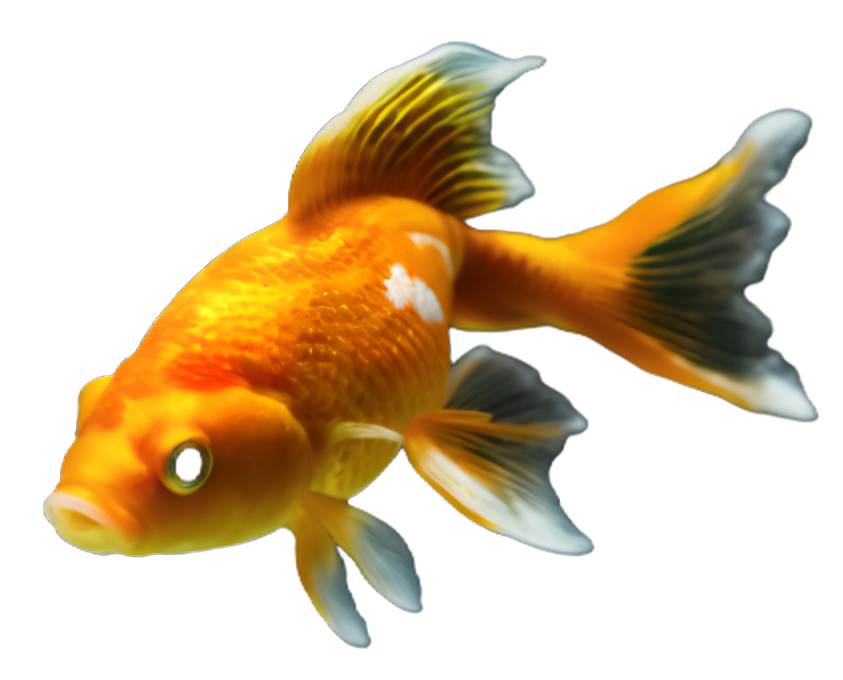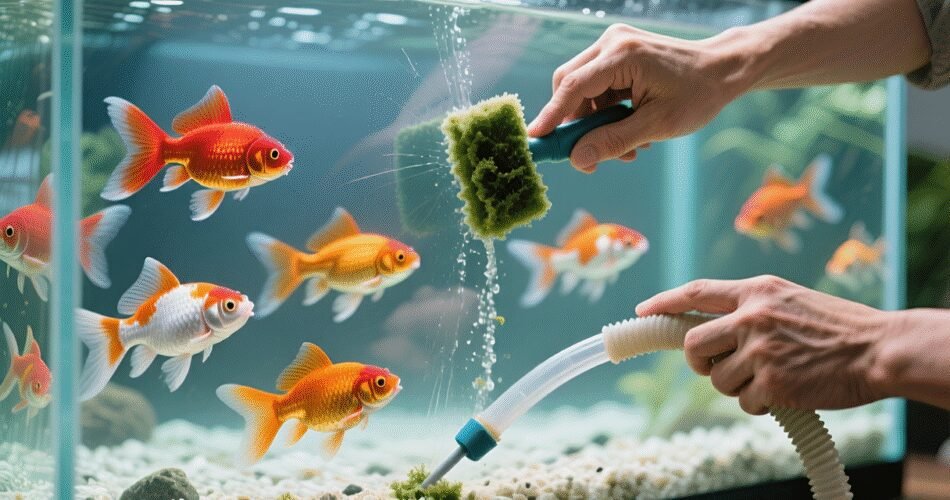Introduction to Goldfish Health and Tank Maintenance
I’ve learned that my goldfish’s health is deeply connected to the quality of their environment. That’s why understanding the importance of tank maintenance for goldfish health is non-negotiable for me. A clean tank isn’t just about clear water—it’s about preventing diseases before they even start. 🐠
Common issues like fin rot, ich, or swim bladder disorders often trace back to poor water conditions. I make sure regular water changes, filter cleaning, and monitoring water parameters are part of my routine. This proactive approach gives me peace of mind, knowing I’m doing everything I can to keep my goldfish thriving.
Common Diseases Affecting Goldfish
I’ve dealt with my fair share of goldfish diseases, and it’s crucial for me to recognize symptoms early. The most common goldfish illnesses I’ve encountered are Ich, fin rot, swim bladder disorder, and bacterial infections. 🦠
Ich shows up as tiny white spots, almost like salt grains, on the body and fins. Fin rot makes the fins look ragged or discolored. Swim bladder issues cause floating or sinking problems, making it tough for the fish to swim normally. Bacterial infections often lead to ulcers, red patches, or lethargy.
If left untreated, these symptoms of common goldfish diseases can quickly worsen, stressing the fish and compromising their immune systems. That’s why maintaining clean water and a stable environment is key to keeping my goldfish healthy.
The Role of Water Quality in Disease Prevention
I know firsthand that water quality is the single most important factor in preventing diseases in goldfish. If I neglect it, my fish suffer—it’s that simple. Poor water conditions stress goldfish and open the door to illness, so I always monitor key parameters closely. 💧
First, I keep an eye on ammonia and nitrite levels. Both are toxic, even in small amounts, and can cause immediate health issues like fin rot or lethargy. I aim for zero ppm for both. Nitrates should stay under 20 ppm to avoid long-term stress.
pH matters too. Goldfish thrive in a range of 7.0–7.4. Sudden swings can shock their systems, so I test regularly and adjust gradually if needed.
Temperature stability is non-negotiable. I maintain a steady 68–74°F (20–23°C). Fluctuations weaken immunity and invite parasites like ich.
By staying on top of these factors, I’m not just keeping the water clean—I’m actively protecting my goldfish from disease. Regular testing and partial water changes are my go-to strategies for maintaining optimal water conditions for goldfish health.
Filtration Systems: Keeping the Tank Clean
I know firsthand that keeping a goldfish tank clean isn’t just about looks—it’s essential for their health. That’s why I rely on the best filtration systems for goldfish tanks to maintain water quality and prevent diseases. Goldfish are messy, producing a lot of waste, so a strong filtration system is non-negotiable. 🔄
I use three main types: mechanical, biological, and chemical. Mechanical filtration removes debris, biological breaks down harmful ammonia and nitrites, and chemical filtration, like activated carbon, polishes the water. A good combo filter does all three. This is exactly how filtration prevents diseases—by eliminating toxins and keeping the environment stable, reducing stress and boosting my goldfish’s immune system. For me, investing in a reliable filter is the foundation of proper tank maintenance.
How to Clean a Goldfish Tank
I start my goldfish tank maintenance schedule with a weekly routine to keep things clean and healthy. First, I unplug all equipment for safety. Using a gravel vacuum, I clean the substrate thoroughly, removing waste and leftover food without disturbing the beneficial bacteria. This is one of my non-negotiable best practices. 🧽
Next, I perform a 20-30% water change, making sure the new water is dechlorinated and matches the tank temperature. I never replace all the water at once—it stresses the fish. While the water is low, I gently wipe the interior glass with an algae scraper or a clean cloth.
For decor, I take out any items like rocks or artificial plants and scrub them in the old tank water. I avoid soap or chemicals—they’re toxic. Finally, I clean the filter media in the discarded tank water to preserve helpful bacteria.
Sticking to this tank cleaning routine helps prevent disease and keeps my goldfish active and vibrant. Consistency is key!
Feeding Practices to Support Goldfish Immunity
I’ve learned that feeding practices are key to boosting goldfish immunity. It’s not just about what I feed them, but how and when. Good nutrition helps prevent diseases in goldfish, keeping them vibrant and resilient. 🍽️
I always include a mix of high-quality flakes, pellets, and fresh veggies like peas or spinach. These nutritional tips for goldfish health ensure they get all the vitamins and minerals they need. I feed small amounts twice a day—just enough that they finish within two minutes. Overfeeding is a big no; it pollutes the water and stresses their system, making them prone to illness.
Sticking to this routine has made a huge difference for my goldfish. Pair it with proper tank maintenance, and I’m giving them the best shot at a healthy, disease-free life.
Monitoring Goldfish Behavior and Health Signs
I keep a close eye on my goldfish behavior every day—it’s the best way I know to catch problems early. I start by watching how they swim. Healthy goldfish are active and curious, gliding smoothly through the water. If I notice one hovering near the bottom, listing to the side, or swimming erratically, I take it as a red flag. 👀
I also pay attention to appetite. A sudden loss of interest in food can be one of the first signs of trouble. On the flip side, eager, consistent feeding is one of the key signs of healthy goldfish behavior.
Physically, I look for clear eyes, intact fins, and vibrant scales. Cloudiness, redness, or unusual spots mean it’s time to act fast. By staying observant, I can detect goldfish illness early and keep my tank—and my fish—in great shape.
How I Quarantine New Goldfish
When I bring home a new goldfish, my first step is always quarantine. I set up a separate tank with a filter and heater, matching the temperature and water conditions of my main tank. This isolation period is crucial—it lets me monitor the new fish for any signs of illness without risking my existing fish. 🚧
I keep the new goldfish in quarantine for at least two to three weeks. During this time, I watch closely for symptoms like lethargy, spots, or unusual behavior. If I spot anything, I treat it right away in the isolated setup.
Only after I’m confident the new goldfish is healthy do I slowly introduce it to the main tank. This careful process is my go-to method for preventing disease spread and keeping all my fish safe and thriving.
When and How to Use Medication Safely
I only use goldfish medication when I’m certain my fish is sick—never as a preventative. Before reaching for any treatment, I test the water. Poor water quality often mimics disease symptoms, so solving that first is my go-to move. 💊
When I confirm an illness, I follow dosing instructions precisely. Overdosing can harm my goldfish, and underdosing won’t help. I always remove chemical filtration like carbon, which can absorb meds and reduce their effectiveness.
I also use a hospital tank for safe treatment. Treating fish in a separate tank protects my main tank’s beneficial bacteria and prevents unnecessary medication exposure.
Ultimately, the best safe medicinal practices in goldfish care start with prevention. Keeping their environment clean with proper tank maintenance reduces the need for medication altogether.
Conclusion: Maintaining a Healthy Goldfish Environment
Keeping a healthy goldfish starts with consistent tank maintenance. I can’t stress enough how important clean water, proper feeding, and regular cleaning are for preventing diseases. It’s my best advice for anyone wanting to avoid common health issues down the line. 🌟
For long-term goldfish health, I stick to a simple routine: weekly partial water changes, testing water parameters, and avoiding overfeeding. These habits are my go-to tips for keeping my fish thriving. Trust me, putting in a little effort regularly pays off big time—my goldfish thank me with years of vibrant, active life. Stay consistent, and we both enjoy the rewards.

